In Florence, Ponte Vecchio and its jewelry shops are a milestone for all visitors. This ancient crossing is located in the heart of the historic center and is closed to cars, but still very busy with pedestrians. Not only do the goldsmiths' shops exert great charm, but also the particular architecture of this bridge adds charm, making it a place where it is nice to walk, even for those who do not intend to do luxury shopping.
Let's discover the centuries-old history of the jewelery shops of Ponte Vecchio, and of the artisans who for four hundred years have continued to embellish a city already incredibly rich in treasures of all kinds.
Explore Florence with Florence Pass
Why are there jewelry shops on Ponte Vecchio?
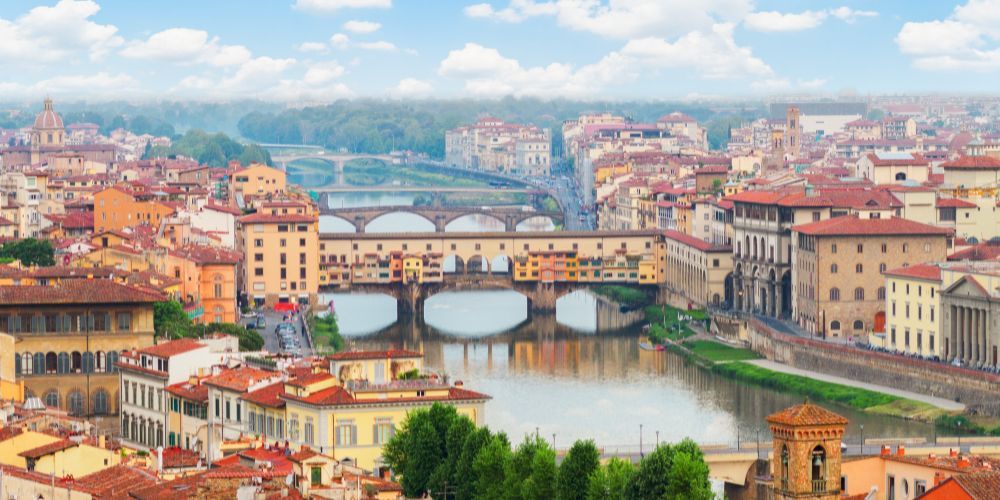
In Florence, Ponte Vecchio is in fact old in name and in fact. Located near one of the oldest Roman crossings of the Arno, in its current version it dates back to the first half of the 14th century, although it's been modified several times.
After the damage suffered by Florence during the Second World War it has truly become the oldest in the city.
The tradition of the jewelry shops on Ponte Vecchio, however, is more recent and dates back to the 16th century, when the Grand Duke Ferdinand I, following the construction of the Vasari Corridor, decided to remove the butchers' shops that were then located on the bridge, for a question of urban decorum. Since then, the shops on Ponte Vecchio have hosted almost exclusively jewelers and goldsmiths.
What kind of jewelry you can find on Ponte Vecchio
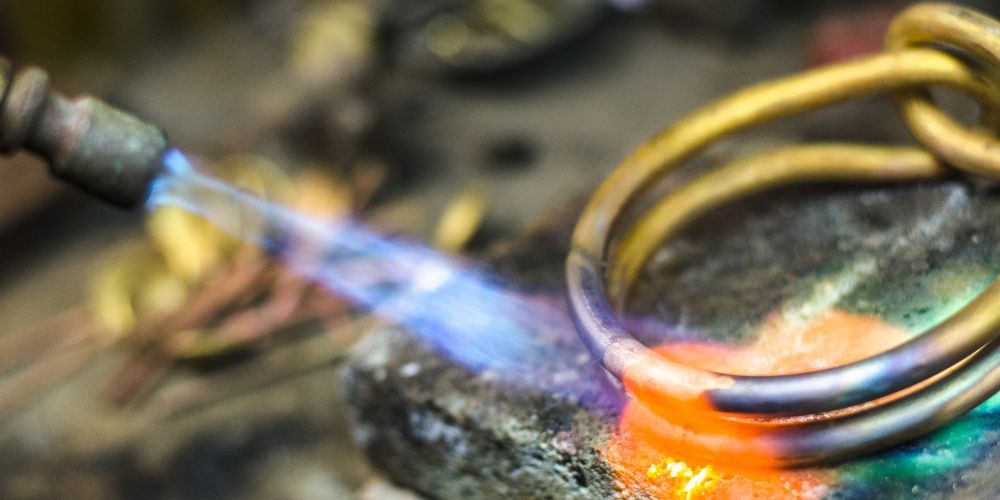
Florence's goldsmith tradition is long and illustrious, and dates back to the Renaissance, when artisans, along with the many other artists who frequented the city, inspired one another.
Through the centuries, they have passed down techniques, styles and secrets that are still in use today. Some of the jewelers on Ponte Vecchio, in fact, continue the family tradition, so the design can be very varied and range from contemporary to classic, also inspired by the city's major works of art, such as Brunelleschi's dome or the masterpieces kept at the Uffizi.
Like true artisans, the goldsmiths on Ponte Vecchio sometimes also customize the jewels with materials and designs on request, creating even more unique pieces.
Visit the Florence CathedralBuying jewelry on Ponte Vecchio
Shopping on Ponte Vecchio is a fascinating experience that allows you to get to know a great tradition up close, in a context that is already unique in itself.
For those wondering if the jewelry on Ponte Vecchio is expensive, the andswer is: it depends! The prices vary greatly, ranging from a few dozen euros for simpler pieces to definitely more expensive ones, since among the almost fifty goldsmiths' shops on Ponte Vecchio you can also find big names in Italian jewelry and the highest level of local craftsmanship.
Wanting to invest in the purchase of a truly unique souvenir of Florence, it is still worth remembering to request the certificates of authenticity that accompany diamonds and other gems.
The peculiar architecture of the jewelry shops of Ponte Vecchio
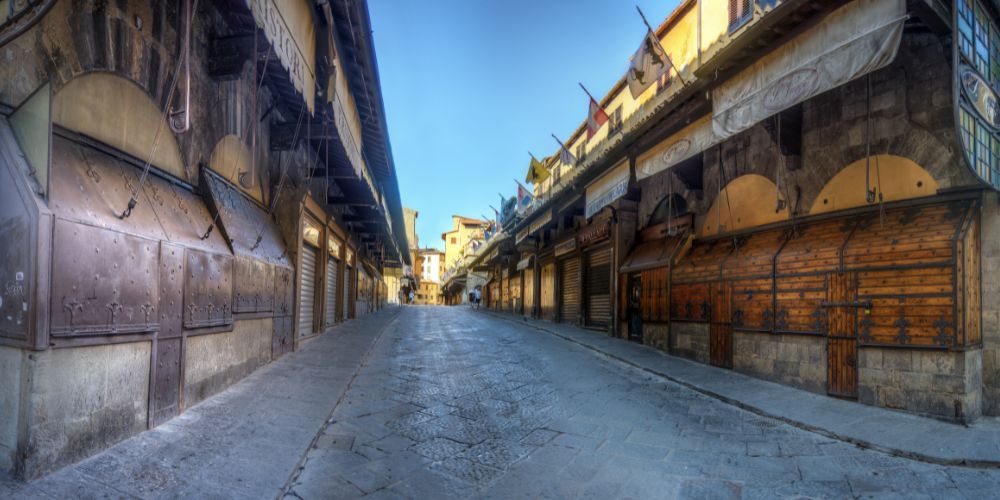
If the jewelry stores on Ponte Vecchio are so iconic, it is not only for the beauty and value of the objects to be admired in their windows, but also thanks to the architecture of the bridge itself, which is in fact one of the most photographed places in Florence.
The three large arches with sturdy pillars that sink into the waters of the Arno, support overhanging wooden shops, which almost seem to be clinging to the bridge so as not to fall into the water.
To make them safe, however, there are the so-called beccatelli, brackets that create an asymmetrical but very scenic effect in the lower band, in contrast with the austere and linear architecture of the Vasari Corridor, which runs above the shops, for the entire length of the bridge. Inside, however, many of the madielle are still visible, the typical folding closures in wood and iron that replace the common portcullis.
Visit the Corridoio Vasariano and the Uffizi galleryAbout the author
Written on 20/05/2025


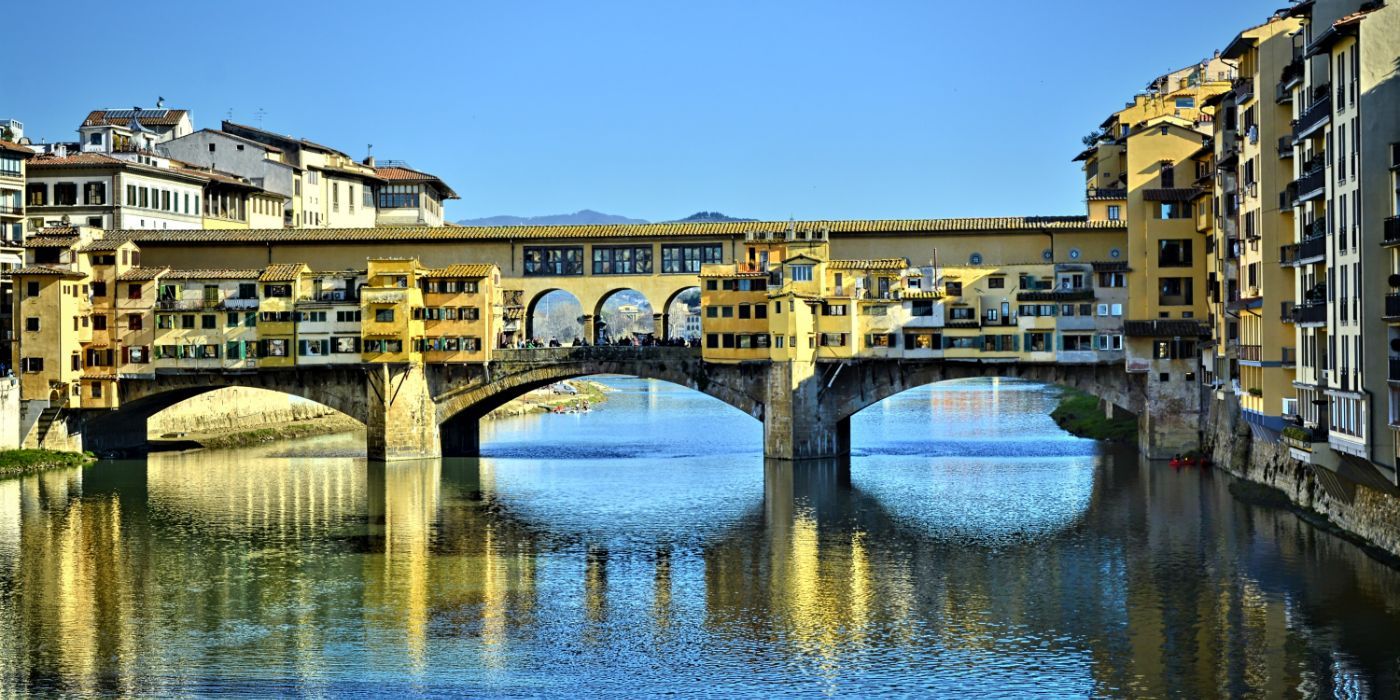
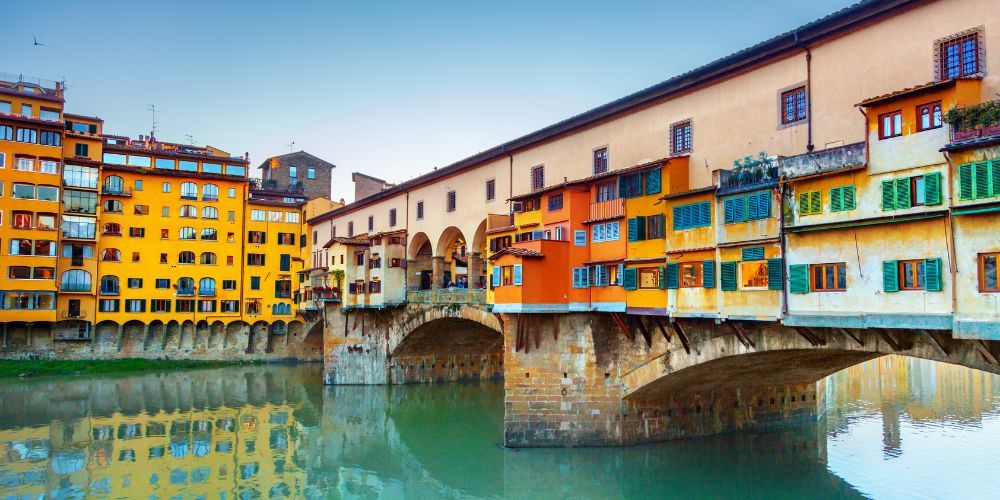

Paola Cirino
The jewelry shops of Ponte Vecchio, a precious artisan tradition of Florence to know and admire, between history and fun facts.